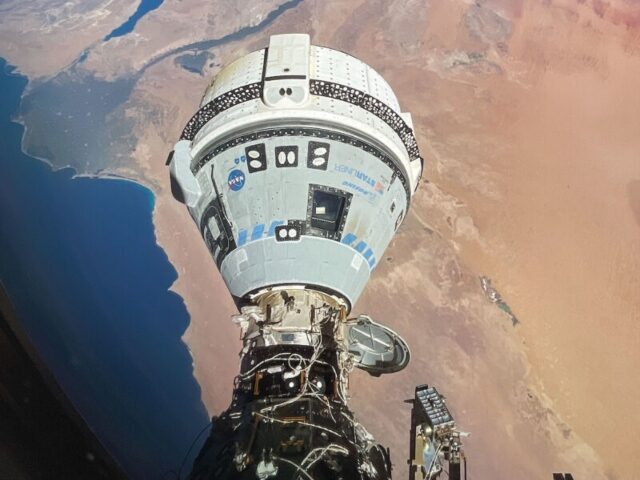Senior NASA officials will convene on Saturday to determine whether Boeing’s Starliner spacecraft is safe enough to bring astronauts Butch Wilmore and Suni Williams back to Earth from the International Space Station.
Ars Technica reports that NASA is set to make a crucial decision this weekend regarding the safety of Boeing’s Starliner spacecraft and its ability to return astronauts Butch Wilmore and Suni Williams from the International Space Station (ISS) to Earth. The Flight Readiness Review (FRR), scheduled for Saturday in Houston, will see top NASA leaders, including administrator Bill Nelson, deliberate on the matter.
Wilmore and Williams, who have been on the ISS for 77 days—nearly ten times longer than their planned eight-day stay—were the first people to launch and dock at the station aboard a Boeing Starliner spacecraft. However, the mission encountered issues as the capsule approached the ISS on June 6, with multiple thrusters failing and a helium leak detected in the propulsion system.
The incident led to extensive testing, both in space and on the ground, as well as data reviews and modeling by engineers to determine the root cause of the thruster problems. The current hypothesis is that the thrusters overheated, causing Teflon seals to bulge and obstruct the flow of propellant to the control jets, resulting in a loss of thrust. The condition of the thrusters seemingly improved once Starliner docked at the station and the thrusters were no longer firing repeatedly.
Despite these findings, engineers and managers have yet to reach a consensus on whether the issue could reoccur or worsen during the capsule’s return journey to Earth. In the worst-case scenario, if too many thrusters fail, the spacecraft may be unable to orient itself properly for the critical braking burn required to guide it back into the atmosphere for landing.
If NASA managers deem the risk unacceptable, Wilmore and Williams would have to extend their stay on the ISS until at least February 2024, when they would return to Earth in a SpaceX Dragon spacecraft. While this alternative eliminates the potential threat posed by Starliner’s thruster issues, it comes with several complications. These include disrupting crew activities on the ISS, exposing the astronauts to additional radiation during their prolonged stay in space, and dealing a significant setback to Boeing’s Starliner program.
Should Boeing’s capsule prove incapable of safely returning its crew to Earth, NASA may require an additional test flight before certifying Starliner for operational crew missions. This could jeopardize Boeing’s ability to complete all six planned operational crew missions under its $4.2 billion NASA contract before the ISS is scheduled for retirement.
The FRR, chaired by former astronaut and head of NASA’s Space Operations Mission Directorate Ken Bowersox, will commence on Saturday morning. If no unanimous agreement is reached during the meeting, the final decision could be escalated to NASA’s associate administrator, Jim Free, or even to administrator Bill Nelson.
NASA has scheduled a press conference for no earlier than 1:00 p.m. ET on Saturday to announce the agency’s decision and outline the next steps. The outcome of this meeting will not only determine the immediate future of Wilmore and Williams but also have far-reaching implications for Boeing’s Starliner program and NASA’s commercial crew program as a whole.
Read more at Ars Technica here.
Lucas Nolan is a reporter for Breitbart News covering issues of free speech and online censorship.

COMMENTS
Please let us know if you're having issues with commenting.